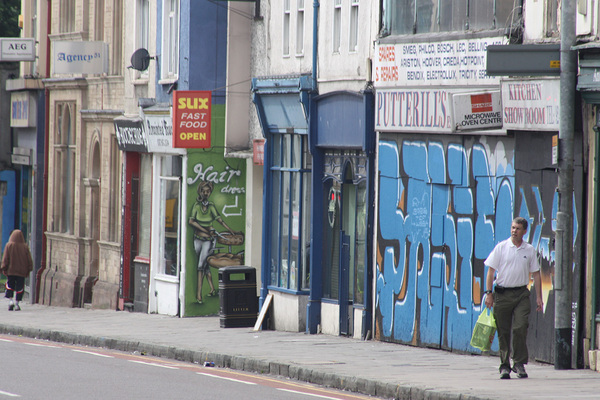Candidate: St Pauls/Montpelier
Location: Bristol, UK
Category: The Great Neighbourhood Award
Year: 2010
Summary
The St Paul’s neighbourhood of Bristol is a very strong contender for the Great Neighbourhood Award. St Paul’s consists of three different communities:
- St Paul’s, originally Afro/Caribbean and more recently Somalian, with largely post-war public and rented houses
- Montpelier “alternative” settlers of 30 years ago predominantly owner occupiers consisting of an established urban area including the Montpelier Conservation Area and
- the business community of Stokes Cross again in a traditional inner city urban area
This is an inner urban area with convenient links to the city centre retail, employment and services as well as to health care. It is a complex urban area with strong well defined character areas, illustrating a layering of different ages of development and use from 19th century terraced residential properties through larger business and commercial buildings, through elegant squares and open spaces to the post war public sector environment of St Paul’s itself. Topographically the area is largely flat close to the centre but the northern areas of Montpelier have more interest in topographical terms.
The issues we discussed with the representatives from the area mainly centred on St Paul’s although much time was spent in the attractive area of Montpelier and also in the Stokes Croft area which has as its core, a vibrant shopping street. All three areas are part of the St Paul’s Neighbourhood Plan. This Plan was instigated by St Paul’s Unlimited Community Partnership (SPU). This partnership consists of residents, agencies, businesses, community interests, The City Council and the South West Regional Development Agency. The plan covers a wide range of initiatives including:
- Stokes Croft Gateway Enhancement Study
- Business Survey
- St Paul’s Traffic and Streetscape Study
- Dove Lane Development Strategy
- St Paul’s and St Agnes Housing Plan
- Planning a Sustainable Future – SPG
- Housing Development Briefs
- Public Art Frameworks
- …and many more
St Paul’s is not a particularly attractive area in visual terms – Montpelier is far more interesting and Stokes Croft is also a fascinating area. However this is not necessarily the point. The great strides that SPU have made in establishing not only a vision for future development but also a means of implementing and managing the area is remarkable.
However there are perhaps issues over the extent to which this is a transferable model. Part of the magic and the success of St Paul’s is very much to do with people listening, understanding each other and getting on – or at least having the wherewithal to overcome some of the issues that plague many other similar areas. So in one sense, there is an issue around how transferable the model of St Paul’s is. is this the outcome of particular circumstances at a moment in time. If this is a transferable model, what are some of the transferable characteristics? Some of these would certainly include:
- the sense of ownership of renewal and community management and the role of the local authority community workers and the financing of the operation
- the catalytic role of the artist as agent for change in Stokes Croft through the People’s Republic of Stokes Croft
- the principle of working with small scale ideas and the fine grain of local areas – not only in the sense of physical fabric but also the grain of the community
- potentially how the knowledge and experience gained in this work is passed on to others – in St Paul’s, in Bristol and over a wider area – and how new generations can acquire this knowledge and ability so that it does not disappear when particular individuals move on
- if St Paul’s represents teamwork between different Council departments and other Agencies then Montpelier represents community cohesion while Stokes Croft represents a more anarchistic attitude to the renewal of the city – all of these would seem to work to an extent
- a very general principle about how much more effective and involving bottom-up can be as opposed to top-down management of inner city areas









